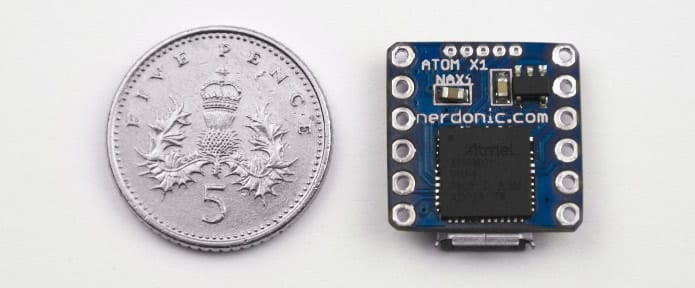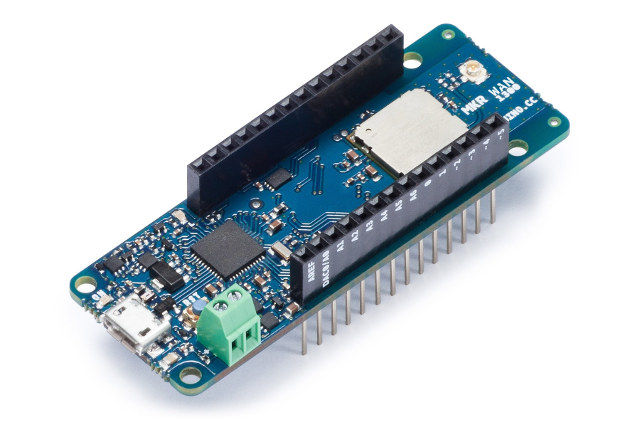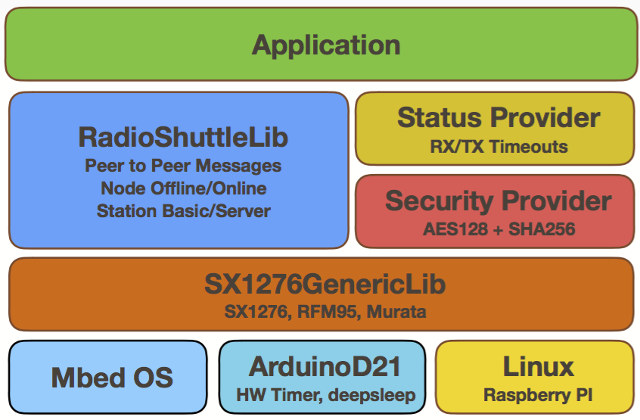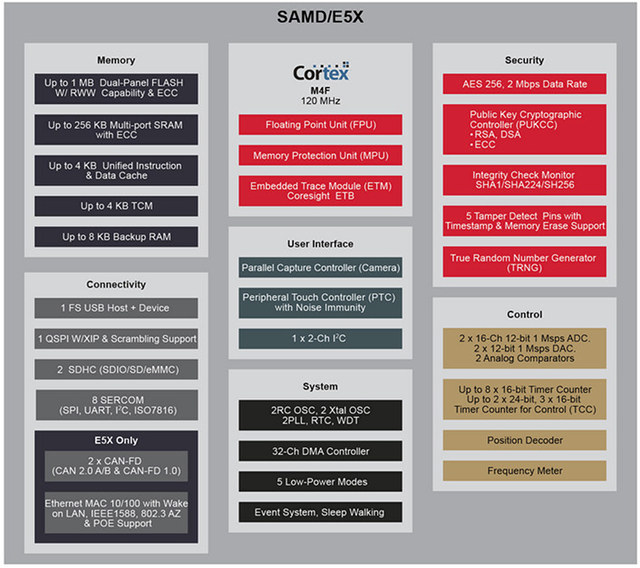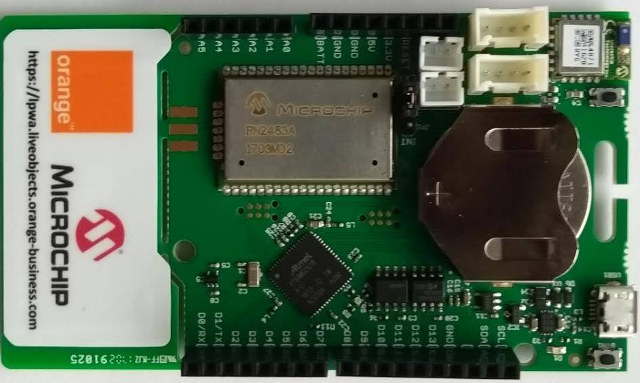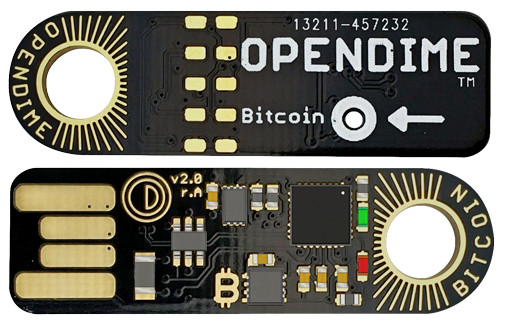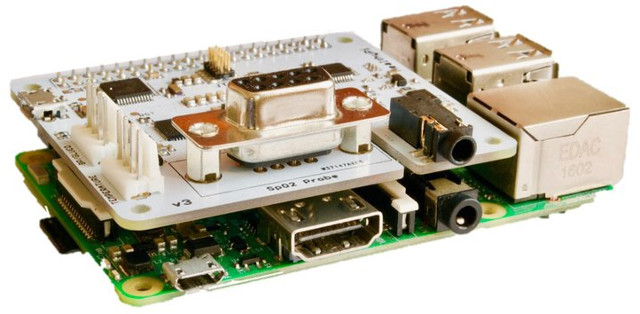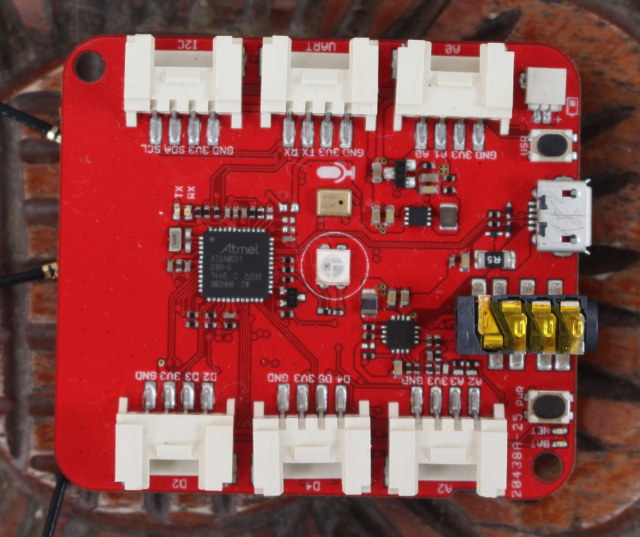Back in June, we reported about μduino board, which at 12×12 mm may well be the world’s smallest Arduino compatible board. It is based on Microchip Atmel ATMEGA32U4 8-bit AVR microcontroller. But there’s now a new board in town which claims to be the world’s smallest 32-bit Arduino board: Exen Mini measuring 14.9×14.9 mm. While I’m patiently waiting for an Intel’s DMCA request, or more likely an email requesting an update once the name has changed, like I had to do for Atomwear Vigekwear, let’s have a look at what the board has to offer. Exen Mini specifications: MCU – Microchip Atmel SAMD21 Cortex M0+ MCU @ 48 MHz with 256KB flash, 32KB SRAM I/Os via 2x 5-pin 2.54mm pitch headers Up to 8x digital I/O Up to 8x PWM Up to 6x analog (ADC) 1x UART 1x I2C 1x reset Limits – 3.7V, 7mA USB – 1x micro USB […]
Arduino MKR WAN 1300 & MKR GSM 1400 Boards Launched with LoRaWAN and 3G Connectivity
Arduino has introduced two new boards right in time for Maker Faire New York: MKR WAN 1300 with a LoRa radio, and MKR GSM 1400 with a “3.75G” cellular module, both software compatible with Arduino Zero, and in Arduino MKRZero board form factor. MKR WAN 1300 Board Arduino MKR WAN 1300 specifications: MCU – Microchip Atmel SAMD21 32-bit ARM Cortex M0+ MCU @ 48 MHz with 32 KB SRAM, 256 KB flash (8KB for bootloader) Digital I/O Pins – 8x digital I/Os, 12x PWM, UART, SPI, and I2C, 8x external interrupts Analog Pins – 7x analog inputs (8/10/12-bit ADC), and 1x analog output (10-bit DAC) DC Current per I/O Pin – 7 mA LPWAN connectivity Murata CMWZ1ZZABZ LoRa module based on Semtech SX1276 and STMicro STM32L Antenna power – 2dB Carrier frequency – 433/868/915 MHz Working regions – EU/US USB – 1x micro USB port for power and programming […]
RadioShuttle Network Protocol is an Efficient, Fast & Secure Alternative to LoRaWAN Protocol
LoRaWAN protocol is one of the most popular LPWAN standards used for the Internet of Things today, but some people found it “lacked efficiency, did not support direct node-to-node communication, and was too costly and far too complicated for many applications”, so they developed their own LoRa wireless protocol software called RadioShuttle, which they claim is “capable of efficiently sending messages in a fast and secure way between simple LoRa modules”. Some of the key features of the protocol include: Support for secure or insecure (less time/energy) message transmission, multiple messages transmission in parallel Unique 32-bit device ID (device number) per LoRa member, unique 16-bit app ID (program number for the communication) Security – Login with SHA-256 encrypt password; AES-128 message encryption Air Traffic Control – Nodes only send if no LoRa signal is active on that channel. Optimized protocol – Message delivery within 110 ms (SF7, 125 kHz, free […]
Microchip SAM D5x and SAM E5x ARM Cortex-M4 Micro-Controllers Launched with Optional Ethernet and CAN Bus
Microchip has just introduced two new families of micro-controllers based on ARM Cortex-M4F with SAM D5x and SAM E5x series sporting up to 1 MB of dual-panel flash and 256 KB of SRAM both with ECC support. Both families also support QSPI flash with XIP (eXecute In Place) support, features an SD card controller and a capacitive touch controller, with SAM E5x family also adding support for two CAN-FD ports and Ethernet. Microchip SAM A5x/E5x key features and specifications: MCU Core – ARM Cortex-M4F core running at 120 MHz with single precision Floating Point Unit (FPU) Memory – Internal memory architecture with user configurable Tightly Coupled Memory, System memory, Memory Protection Unit and 4KB Combined I-cache and D-cache; up to 256KB ECC SRAM, up to 1MB ECC flash Storage I/F – Quad Serial Peripheral Interface(QSPI) with Execute in Place (XIP) Support Peripherals Up to 2x Secure Digital Host Controller (SDHC) […]
Microchip based Orange LoRa Explorer Kit Connects to Orange’s own LoRaWAN Network
You’d think Telecom operators with all infrastructure in place would focus their IoT efforts on LTE Cat M1 or LTE Cat NB-IoT, but Orange has setup its own LoRa network in France with the aim of achieving national coverage by December 2017, at which time they’ll also test interconnection and roaming with other European operators. The company has also launched the LoRa Explorer Kit based on Microchip solutions, and designed by SODAQ. Orange LoRa Explorer Kit specifications: MCU – Microchip Atmel SAMD21 ARM Cortex M0+ MCU @ 48 MHz with 256KB flash, 32KB RAM, up to 16KB EEPROM by emulation Storage – 4Mbit serial flash (Microchip SST25PF040C) Connectivity Microchip RN2483A LoRa module + PCB antenna Microchip RN4871 Bluetooth 4.2 module (BLE) with ceramic antenna Security – Microchip ATECC508A1 crypto chip to securely store LoRa keys. USB – 1x micro USB port for charging and programming Expansion – “Arduino M0” compatible headers with 10-bit […]
OpenDime is a Bitcoin USB Stick based on Microchip SAMD21 MCU, and ATECC508A Security Chip
The first time I heard about crypto currencies, specifically Bitcoin, was probably around 2011, and later in May 2012, I noticed a “micro-payments with Bitcoin digital currency” talk at a Barcamp. I did not think much of it at the time, but with hindsights, I should definitely have started to mine some Bitcoins considering the price was $5. Nevertheless, cryptocurrencies appear to be here to stay, and while most transactions occurs over the Internet, Opendime project has made a hardware USB dongle to store Bitcoins, and earlier this year, announced version 2 of their “Verified Bitcoin Credit Stick”. Hardware specifications of OpenDime v2.0 / v2.1 USB stick: MCU – Microchip / Atmel SAMD21 Cortex M0 MCU Security Chip – Microchip / Atmel ATECC508A Crypto chip with support for SHA-256, TRNG, and public key signing (ECDSA) USB 2.0 interface to connect to a computer Bitcoin seal The USB stick works like […]
HealthyPi Raspberry Pi HAT Measures ECG, Body Temperature, and Oxygen Saturation (Crowdfunding)
Bangalore based ProtonCentral has launched the third version of Healthy Pi, a vital sign monitor using the Raspberry Pi as its computing and display platform, and capable of measuring body temperature, oxygen saturation, and ECG/respiratory data. Healthy Piv3 board specifications: MCU – Atmel ATSAMD21 ARM Cortex M0 MCU, compatible with Arduino Zero Vital Signs Chips ECG and respiration front-end – TI ADS1292R 24-bit analog front-end with SNR of 107 dB Pulse oximetry – TI AFE4490 Pulse Oximetry front-end with integrated LED driver and 22-bit ADC Temperature – Maxim MAX30205 digital body temperature sensor for skin temperature sensing Expansions Headers and Ports 1x 40-pin header to connect to Raspberry Pi 2x 3-pin connectors for temperature and BP/GLUCO DB9 connector for finger-clip Spo2 probe 3.5mm jack for ECG cable and probes 1x UART connector for an external blood pressure module USB – 1x micro USB port for power and programming Debugging – […]
Review of Wio Tracker with GPS, Bluetooth 3.0 and GSM Connectivity
Wio GPS – also called Wio Tracker – is an Arduino compatible board based on Microchip Atmel SAMD21 MCU with GPS, Bluetooth, GSM/GPRS connectivity, as well as several Grove connectors to connect sensors and modules for your IoT project. SeeedStudio sent me a sample for evaluation, so I’ve tested it, and reported my experience below by testing some of the Arduino sketches. Wio Tracker Unboxing All I got in the package was Wio GPS tracker v1.1 board. The top includes the Atmel MCU, an RGB LED, a microphone and 3.5mm AUX jack to make phone calls, a user and power button, a micro USB port for power and programming, a small 2-pin connector for a battery, and 6 Grove connectors for digital, serial, I2C and analog modules. The other side of the board comes with Quectel MC20 module that handles Bluetooth, GPS and GSM, a dual use micro SD card […]


